
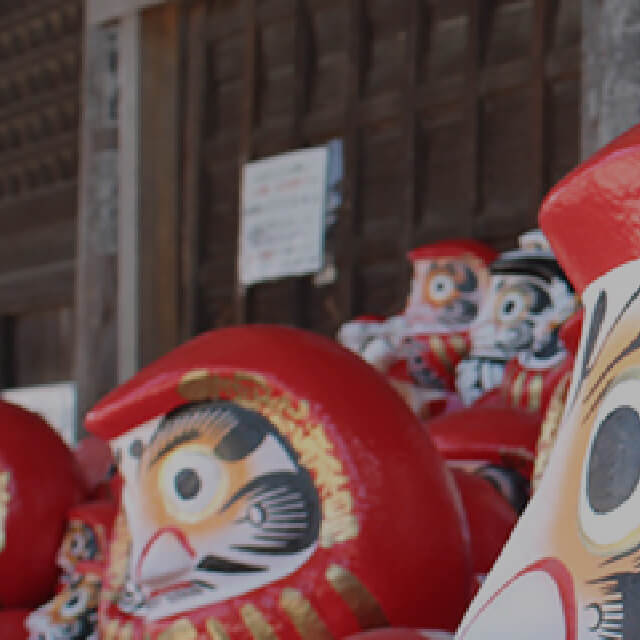
Takasaki City - Linking Kanto to the Shinetsu Region
Situated at the northern end of the expansive Kanto plain, Takasaki City is symbolic of Gunma Prefecture.
In the heart of Takasaki, known for its music, art, pasta and steam trains, is a commercial hub boasting a large variety of unique stores bustling
with people, goods and information.
The Haruna and Kurabuchi areas also offer beautiful natural scenery just a stone’s throw from the city.
- The lucky town Takasaki
- A city of music & art
Takasaki - Tomioka Silk Mill and
Related Heritage Sites - Other
- Example :
- Heritage
- Park
- Eat/Drink
- Museum
- Shopping
- Entertainment
-

Heritage
Syorinzan Darumaji Temple
This temple is the birthplace of the Takasaki Daruma and within the temple grounds is a hall featuring daruma from all over Japan. Each year on January 6 and 7, people flock to the temple for the “Daruma-Ichi” or Daruma Fair to purchase daruma dolls.
-

Heritage
Byakue Dai Kannon
This statue of the Goddess of Mercy reaches 41.8 meters high (Approx. 9-stories) and is made from 6,000 tonnes of concrete. Visitors can also walk inside the statue. Visitors can climb up to the height of the statue’s shoulder while looking at the Buddhist statues placed along the way.
-

Heritage
Haruna Shrine
Haruna Shrine is a historical shrine that has been revered since ancient times in Japan. The main shrine, appearing to be part of a massive rock formation, makes for an impressive sight. This site is also home to a local specialty, “Monzen Soba” noodles.
- Example :
- Heritage
- Park
- Eat/Drink
- Museum
- Shopping
- Entertainment
-

Museum
Takasaki Tower Museum of Art
The Takasaki Tower Museum of Art opened on November 15, 2001, as a museum that focuses on Japanese art. The museum is located two minute’s walk from the East Exit of Takasaki Station. Spend some quiet time strolling around the exhibits inside the relaxed atmosphere of the museum.
-

Museum
Takasaki Museum of Art
The Takasaki Museum of Art holds around four-five exhibitions each year focusing on a variety of contemporary art from paintings, sculptures to design works. Located close to JR Takasaki Station, the museum is ideally located for a quick visit.
-
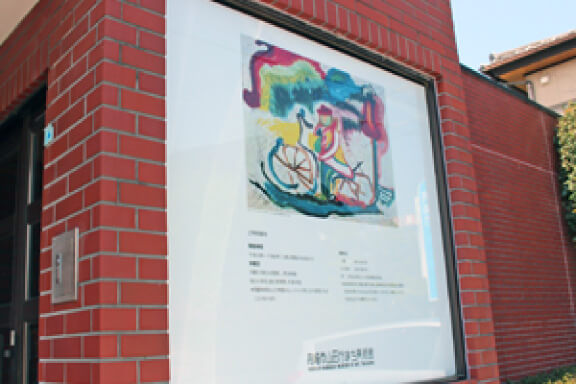
Museum
Yamada Kamachi Museum of Art
This museum stores and exhibits an extensive range of artworks, poetry and other personal belongings left behind by Yamada Kamachi, a young artist who displayed an outstanding talent for drawing and composition, who unfortunately passed away at the young age of 17. The museum is visited by a large number of young artists to this day.
-
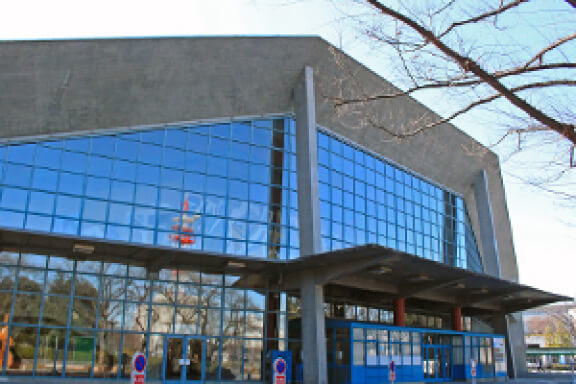
Museum
Gunma Music Center
Designed by master designer, Antonin Raymond, a figure who had a significant impact on modern architecture in Japan, the unique folded plate structure that forms the exterior serves as a rare symbol of modern architecture in Japan. The center is also known as the home of the Gunma Symphony Orchestra.
-
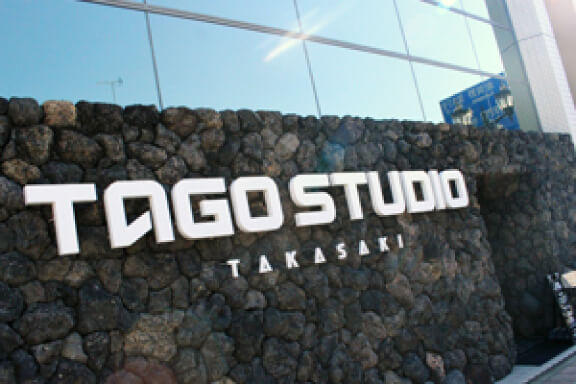
Museum
TAGO STUDIO TAKASAKI
Professional recording studio established together by Takasaki City and studio producer, Kunio Tago (Born and raised in Takasaki. Music composer & producer.).
Based on the condition that it would be used to create music to promote Takasaki City, the 1st floor recording studio is provided to professional musicians and select young musicians, offering them a premium quality recording environment at minimal cost.
Admission to the lounge on the second floor is free of charge and has a kids area, offers light refreshments (charges apply) and hosts a variety of events befitting a cultural facility, including talk shows, etc.
- Example :
- Heritage
- Park
- Eat/Drink
- Museum
- Shopping
- Entertainment
-
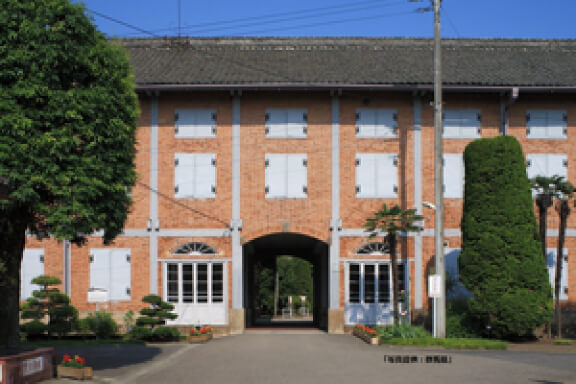
Heritage
Tomioka Silk Mill
- Japan’s first real silk mill introducing silk making technologies from France -The Tomioka Silk Mill is a government owned, mechanized silk reeling mill established by the Meiji government in 1872. It continued to produce silk following privatization of the mill and lead the world in sericulture and silk making, employing cutting edge technologies at the time. Working together with the Tajima family, the Arafune Cold Storage Facility and the Takayama-sha Sericulture School, the mill pioneered the way for the development and spread of the highest quality silkworms. The key facilities still remain in almost perfect condition today, including the timber-framed brick building of the cocoon warehouse, a structure over 100 meters long that also serves as a representation of the combination of Japanese and Western technologies and the silk reeling mill.
-
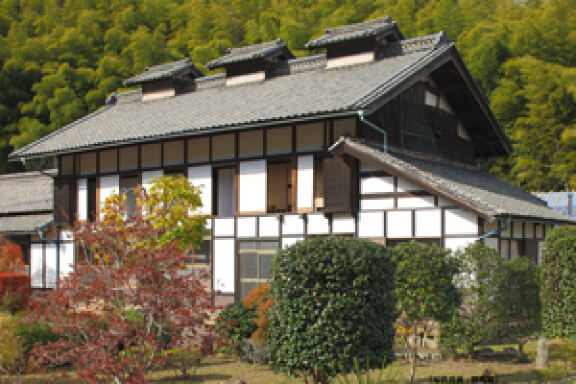
Heritage
Takayama-sha Site
- Site and sericulture school responsible for the development of seion-iku, a method for raising silkworms that became the standard for modern-day sericulture in Japan -In 1883 Chogoro Takayama established a method called seion-iku, as a method for breeding silkworms, which involved careful ventilation and temperature control. The Takayama Sericulture School that was established on this site the following year was responsible for spreading this technology across Japan and to the rest of the world, establishing seion-iku as the national standard for sericulture. The residence and silkworm rooms built in 1891 formed an ideal structure for seion-iku and was where a large number of trainees were schooled in this method.
-
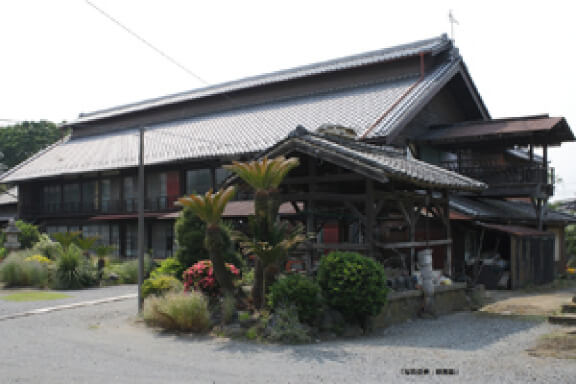
Heritage
Former residence of Tajima Yahei
- The prototype for modern sericulture farmhouse architecture with a raised roof for ventilation set into the tiled roof -This formed the residence and silkworm rooms built in 1863 by Tajima Yahei, responsible for establishing the seiryo-iku method of raising silkworms that placed a strong emphasis on ventilation. The residence had a frontage of approximately 25 m, was approximately 9 m deep and had two stories with a tiled roof and was the first of its kind with a raised monitor set into the roof for ventilation. This style of architecture spread across Japan through Yahei’s book, “A New Theory of Sericulture” written with the aim of spreading this method of seiryo-iku, and became the prototype for modern sericulture farmhouses.
-
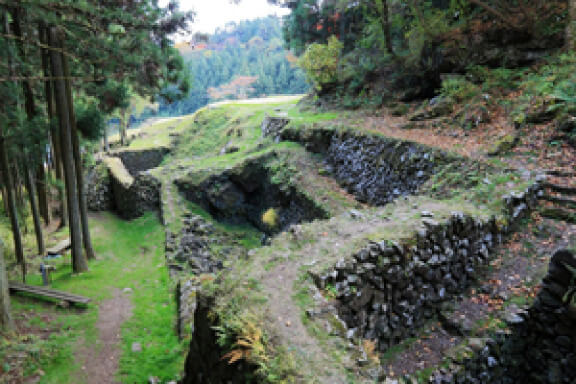
Heritage
Arafune Cold Storage
- Japan’s largest storage facility for silkworms using natural cold air -This storage facility was built between 1905 and 1914. It was used to store silkworm eggs, using the cold air that blew through gaps in the rocks and allowed silk production to be carried out multiple times per year instead of just once. There were three of these storage facilities, making them the largest of its kind in Japan in terms of storage capacity with customers lining up from all over Japan and the Korean Peninsula.
- Example :
- Heritage
- Park
- Eat/Drink
- Museum
- Shopping
- Entertainment
-
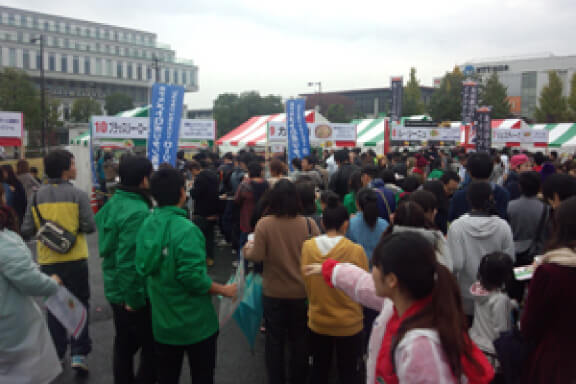
Eat/Drink
King of Pasta
Takasaki is known for its unique pasta culture, and is famous for being the “city of pasta”. The King of Pasta is a popular event held each year where local restaurants prepare their own unique pasta dish, which is voted on by the participants to determine the King of Pasta.
-
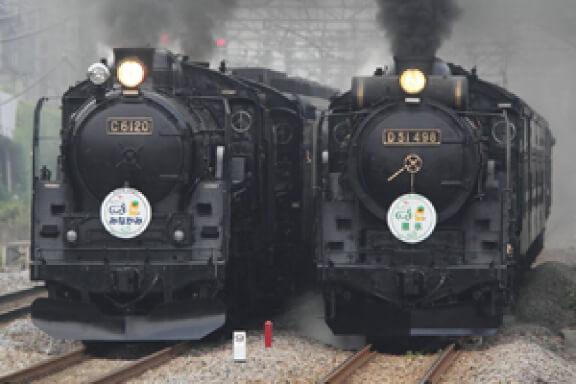
Entertainment
The city of the steam locomotive
Takasaki is a city where some of the few remaining steam locomotives in Japan are still running. Depending on the day and time of year, the D51 or C61 steam locomotive runs from Takasaki Station through to Minakami Station to it final destination at Yokokawa Station. These trips are generally only available on the weekends. This photo was taken as part of a special Gunma tourism campaign run in 2012. People flocked from all over Japan to witness the D51 and C61 steam locomotives powerfully strut their stuff.
-
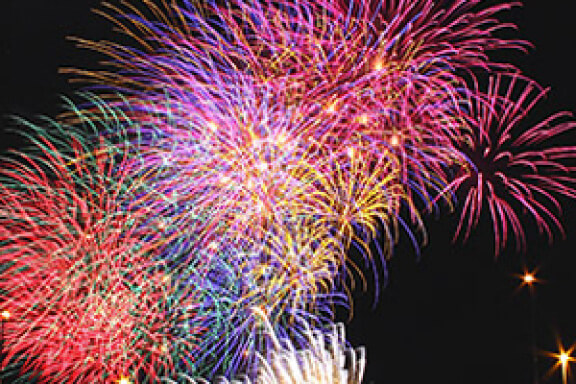
Entertainment
Takasaki Festival
The Takasaki Festival is held in the heart of Takasaki City on the first Saturday and Sunday of August each year. During the day watch the portable shrines jostle for position and the floats parade through the city and on the first night of the festival, watch the largest fireworks display held in the North Kanto Region, with approximately 15,000 fireworks lighting up the night sky.
-
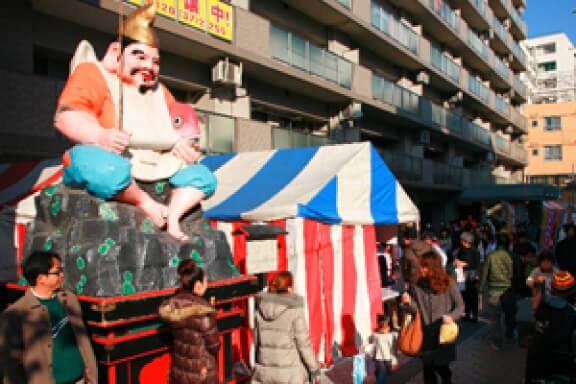
Heritage
Ebisuko
Ebisuko Ichi is an event unique to the merchant town of Takasaki. The city comes alive with major bargains on offer and lotteries in the shopping districts.
